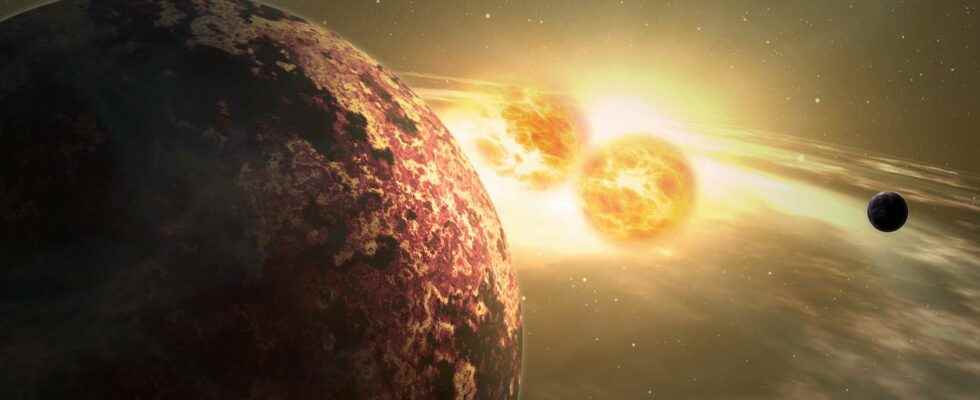When astronomers talk about a double star, they are actually talking about two stars that revolve around each other. And it is therefore around two stars engaged in a rather tight dance that they have just observed three different protoplanetary discs, likely to give rise to three distinct planetary systems!
You will also be interested
[EN VIDÉO] Exoplanets What are exoplanets, where are they found and why are they so interesting? Video answer!
The astronomers call it SVS 13. It is a binary system rising stars. A double star which is only about 980 light years of our Earth, in the cloud molecule of Perseus. The two stars that constitute it — from one mass total almost equivalent to that of our Sun — are very close to each other. At almost 90 times the distance between our Sun and our Earth — a little more than twice the Sun-Pluto distance.
But what makes it really special to eyes from University of Manchester researchers (United Kingdom), is that they observed around him, not one, not two, but indeed three discs of gas and dust. From protoplanetary discs that could give birth to three planetary systems distinct.
By studying thirty years of data collected using the Very Large Array (VLA), a radio telescope located in New Mexico (USA), and more recently, the Atacama Large Millimeter/Submillimeter Antenna Array (Alma, Chile), astronomers have come to the conclusion that each star of SVS 13 is surrounded by a disc of gas and dust — which is 30 times the Earth-Sun distance. And that an additional protoplanetary disk, larger than the others — it extends up to 500 times the Earth-Sun distance — has formed around the two stars. A disk with a spiral structure that feeds matter the two others protoplanetary discs.
Planetary systems ready to welcome life?
This study is the most detailed that has ever been carried out on the SVS 13 system. It traces the movements of the two stars that form it over a period of thirty years. What to go back to their orbitsbut also to the geometry and orientation of the system, to the mass of stars emerging or to the mass and temperature of their protoplanetary disks.
Astronomers even give the composition of the gases and dust that make them up. They identified nearly thirty molecules different. Among which, thirteen complex organic molecules. Precursors of life. “ This means that when the planets begin to form around these two suns, the building blocks of life will be there.”enthuses Ana Karla Díaz-Rodríguez, researcher at the UK Alma Regional Centerin one press release from the University of Manchester.
Most of the nearly 5,000 exoplanets confirmed today have been discovered orbiting single stars. And astronomers believe that binary — or even multiple — systems form a gravitational environment a little too complex to initiate the process of planet formation. But this work provides important new information that will test the formation models of these systems. To put them to the test and perhaps also to complete them to better understand the conditions under which binary star systems — which, let us remember, are extremely numerous in theUniverse — can give birth to planets.
Interested in what you just read?
